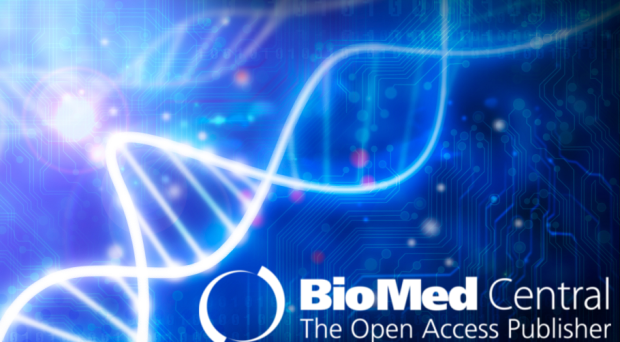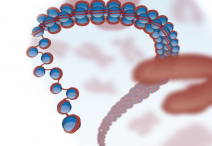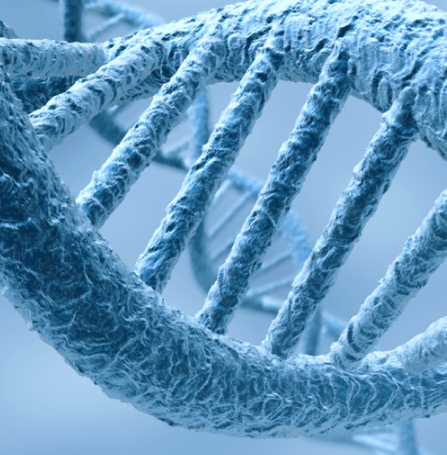
DNA Day marks the anniversary of when Watson, Crick, Wilkins, Franklin and Gosling published their papers in Nature on the structure of DNA. It also marks the completion of the Human Genome Project in 2003.
The discovery of DNA has had a huge impact on our lives. The field of genetics began with the advent of Mendelian genetics in the 17th Century, but without any idea of the molecular basis of inheritance. Knowledge of cells led to knowledge of chromosomes, then finally to the structure of DNA.
Genetics has gradually specialized into many fields that are still advancing and further branching off today. In honor of DNA day I wanted to mention a few areas of genetics that I think we have particular reason to be excited about:
Cytogenetics
 Cytogenetics involves looking at the structure and function of chromosomes. The field has been around for much longer than we have known about the structure of DNA – in fact 19th Century cytologists used compound microscopes to discover the organization present in all plants and animals. A review by Malcolm A Ferguson-Smith (University of Cambridge, UK) recently published in Molecular Cytogenetics looks at the history and evolution of cytogenetics.
Cytogenetics involves looking at the structure and function of chromosomes. The field has been around for much longer than we have known about the structure of DNA – in fact 19th Century cytologists used compound microscopes to discover the organization present in all plants and animals. A review by Malcolm A Ferguson-Smith (University of Cambridge, UK) recently published in Molecular Cytogenetics looks at the history and evolution of cytogenetics.
While not a new field, cytogenetics has become an established clinical technique. In addition to research and reviews, Molecular Cytogenetics regularly publishes important case reports that shed light on cytogenetic aberrations that lead to serious syndromes and diseases. A recent case report in the journal used cytogenetic analysis to show a first case of abnormal sexual development in a cat with symptoms similar to that of Klinefelter syndrome, where males have extra chromosome and the sexual organs do not properly develop.
Mobile genetic elements
This area of genetics involves the study of DNA rearrangements, ranging from transposition and other types of recombination mechanisms to patterns and processes of mobile element and host genome evolution. The founder of this field was Nobel Prize winner Barbara McClintock, who discovered transposition in maize during the 1940s and 1950s, and then used this to demonstrate that genes can be switched on and off.
The field has grown to be hugely diverse, as shown by the transposable elements labs directory in the journal Mobile DNA, which includes any labs who study mobile elements.
With greater knowledge of transposable elements (and with genome sequencing), we know that around 50% of the human genome is composed of mobile DNA. We have not yet fully realized the cause and consequences of DNA sequences moving around genomes – while it used to be suspected that transposition is a random process, research suggests that it is an important force in genome evolution. An article recently published in Mobile DNA showed horizontal transfer of transposons between invertebrates and bats, possibly through bats ingesting insects. So are we literally what we eat?
Epigenetics
 Epigenetics is the study of heritable changes that do not change DNA sequence. The field incorporates biochemical changes to DNA (such as DNA methylation) or structural proteins – histones (such as histone acetylation). It also involves regulation of gene expression, by non-coding RNA, chromatin landscape, etc.
Epigenetics is the study of heritable changes that do not change DNA sequence. The field incorporates biochemical changes to DNA (such as DNA methylation) or structural proteins – histones (such as histone acetylation). It also involves regulation of gene expression, by non-coding RNA, chromatin landscape, etc.
The field has boomed in recent years, and now epigenetics is quickly moving to the clinic. The journal Clinical Epigenetics regularly publishes articles that advance our knowledge on the epigenetic basis of disease, or translate epigenetic principles into potential new therapies. Nutriepigenomics is a very exciting field, looking at how food affects our epigenome and could potentially fight the effects of disease and aging. A recent review in Clinical Epigenetics investigates if epigenetics is the key to personalized nutrition.
Genomics
Genomics is a much newer field than genetics, having been made possible by the invention and development of sequencing technologies. This discipline looks at the genome as a whole, using powerful sequencing and bioinformatic techniques. DNA Day is a proud day for genomics, paying tribute to the milestone of completing the Human Genome Project.
Sequencing capabilities are constantly improving, in terms of making them more accurate, easier, less laborious, and cheaper. A recent article in Human Genomics demonstrates a new technology for rapid detection of genetic mutations in individual breast cancer patients by next-generation DNA sequencing.
Investigative genetics
This really encompasses all disciplines of genetics, including the above-mentioned areas. The potential to use genetics to answer questions of societal relevance is indeed very exciting and something that non-geneticists are doing more often nowadays, such as the recent use of ancient DNA analysis alongside historical evidence to identify the skeleton of Richard III in a car park in Leicester, UK.
 An article collection on Human evolutionary genomics in the journal Investigative Genetics looks at the analyses of modern and ancient human genomes, allowing comprehensive investigations into where and when our ancestors originated and migrated, as well as how environmental factors impacted adaptation. A research article in the series by Chris Tyler-Smith and colleagues in fact showed, through modeling, that just one to three men are likely to have been the ancestors of Europeans.
An article collection on Human evolutionary genomics in the journal Investigative Genetics looks at the analyses of modern and ancient human genomes, allowing comprehensive investigations into where and when our ancestors originated and migrated, as well as how environmental factors impacted adaptation. A research article in the series by Chris Tyler-Smith and colleagues in fact showed, through modeling, that just one to three men are likely to have been the ancestors of Europeans.
Investigative Genetics covers the full scope of genetics, and also has five sections – ancient DNA, genetic technology & methodology, anthropological genetics, human population genetics, and forensic genetics.
Over the years DNA research has branched into many more disciplines than those listed above, and I look forward to seeing how genetic and genomic research will impact our lives in the future. Emerging areas such as single-cell sequencing and gene editing are showing great promise for biotechnological and biomedical applications.
- Raising funds for genetic diseases - 23rd September 2016
- The Epigenetics and Chromatin Clinic - 9th November 2015
- Resurrecting one of the oldest genetics journals - 23rd October 2015
One Comment